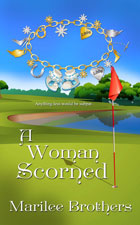Professional Wine Tasting Tips
To taste wine like a professional, you must learn to be a deliberate taster. And beyond that, you must be able to describe what you taste. Don't be one of those wine drinkers who remains at the "I know what I like and I know what I don't like when I taste it, but I can't describe either one" stage forever. Wine drinking becomes even more pleasurable when you have some techniques that "the experts" use. Spend a concentrated minute smelling, tasting, and accessing the wines - thereby taking mental snapshots of them.
First impressions are important. When tasting a wine for the first time don't be talking about a show you saw on TV last night and get through the first half-glass then realize you've no idea what you've just tasted! (This happens to me occasionally when I'm at a wine shop and socializing is an important part of the event).
There are three major steps in the process: Look, Smell, Taste.
Look at the wine
Make sure you have ample lighting in the tasting area and some form of white background against which to view the contents of your glass (this could be a sheet of paper or white tablecloth). Tilt the glass 45 degrees and view the clarity and color of its contents. Clarity is described as bright, brilliant, clear, limpid, transparent, dense, opaque, cloudy, hazy, or milky. Color for white wines is colorless, straw, green-yellow, yellow, gold, tawny, copper, amber or brown; for rose, color is pink, rose, pale red, violet, salmon, orange, apricot or russet; for red wine color is red, garnet, cherry, brick, tile, ruby, violet, peony or purple. Ageing will show orange and browns.
Smell the wine
There may be more to learn from smelling a wine than from tasting it. The nose is more sensitive than the mouth and smelling a wine is critical to tasting it. Here's the drill:
Put your nose right into the glass and get as close to the wine as you can in order to gently detect the heavier vapor near the surface.
Swirl the wine. Rest the glass on a table, then, holding the stem, rapidly move it as if you were drawing small circles. Sniff again. The nose fatigues quickly (about six seconds) so try to assess the aromas in the glass immediately. Does the wine smell healthy/clean? (It shouldn't smell moldy, vinegary or oxidized). Some of the aromas, depending on the grape, are fruit, spice and floral, and others such as leather, smoke, mineral, herbaceous, grass, yeasty, earthy, honey, chocolate, and tobacco. The smell of a wine may be called its nose, aroma, or bouquet. Bouquet is the part of a wine's smell derived from its development while it was in the bottle, while aroma is usually associated with a young wine - hence, a young wine can have a cherry aroma.
Taste the wine
Use your palate to decide if the wine contains the elements of sugar, acid, alcohol and tannins in a pleasing (or well balanced) proportion. The four basic tastes (sweet, sour, bitter and salty - but salty is usually not an issue in wine) comprise the flavor world but they are more difficult and complex to describe than body and texture. So, take a first sip, like a cup of coffee, and make an initial assessment. Now take a second sip, but don't swallow. Swish the wine around your mouth so a little of it touches every portion of your tongue and palate. Hold the wine in your mouth, make an "O" with your lips, and inhale some air over the wine in your mouth. A kind of gurgle will ensue, but this will make you more sensitive to everything in the wine. Good wines begin with simple fruit flavors that expand quickly in your mouth then fade. Slightly better wines begin with more pronounced fruit flavors that are sustained longer in the mouth. Some above-average wines begin with exciting flavors and have long, evocative finishes. Wines at this level make you take notice of them. In some complex, relatively young wines, powerful layers of flavor burst open and rush over the palate in one long continuous wave. The finish is the aftertaste, which is considered a plus. So it goes...
There are more ways to describe wine tasting than we have time for in this article. If you're interested in learning about wine, I encourage you to take the time to use the few principles of wine tasting presented here, drink wine and expand your palate.
Cheers,
Durella DeGrasse
Certified Wine Professional
Return to Marilee's Washington Wine page

